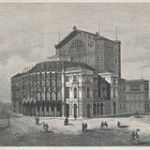 II. BAYREUTH,
II. BAYREUTH,
or “BUILDING AN OUTSTANDING THEATRE
FOR AN IMMODERATE WORK”
1- Munich-Bayreuth:
projects, talks and tugs of war between an artist and his patron
And the work in all of this? Because if it is a matter of buildings, architecture, future “Festival Theatre” or Festspielhaus, it is all to welcome a work: The Ring. How much progress has been made with the composition?
Certainly King Ludwig II was compelled – sick at heart – to declare the banishment of his dearest friend out of Munich, but he himself started to get impatient. So what did the composer who “left Siegfried in his forest” in 1857 to devote himself to the composition of Tristan and Isolde… and never went to get him back do?
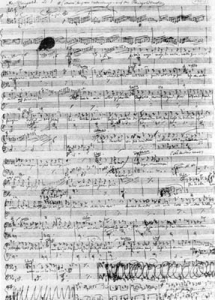 Thus began, between Richard Wagner and Ludwig II of Bavaria, one of the most extravagant power and manipulation (and even blackmail) struggles in the history of music. Wagner had indeed yielded in 1864 to the King his rights over the performances of The Ring. However, in 1869, the composer only handed over to his illustrious monarch the first two episodes of his epic: The Rhinegold and The Valkyrie.
Thus began, between Richard Wagner and Ludwig II of Bavaria, one of the most extravagant power and manipulation (and even blackmail) struggles in the history of music. Wagner had indeed yielded in 1864 to the King his rights over the performances of The Ring. However, in 1869, the composer only handed over to his illustrious monarch the first two episodes of his epic: The Rhinegold and The Valkyrie.
And Ludwig II awaited the rest. But since for Wagner there was no way a single episode of the Ring would be staged so long as the production “conditions” he dictated to the king were not met, the composer did not plan to finish – or at least deliver – the entire Ring. Satisfying Ludwig II’s dream? Let him give this exceptional work a theatre worthy of it! When the construction project of the Festtheater was cancelled in 1868, Wagner “dragged his feet” as to the composition of the music of Siegfried and Twilight of the Gods because he did not have a sufficiently precise vision regarding the purpose of “his great undertaking”.
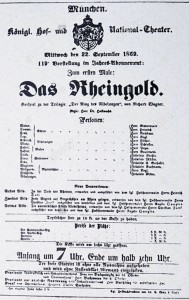 In a “conciliation” letter written by the king and addressed to the composer at the end of spring 1869, Ludwig II declared to Wagner his intention to have The Rhinegold staged in Munich. Stupor and anger of the composer (who should have expected such a statement at some point)!
In a “conciliation” letter written by the king and addressed to the composer at the end of spring 1869, Ludwig II declared to Wagner his intention to have The Rhinegold staged in Munich. Stupor and anger of the composer (who should have expected such a statement at some point)!
But Wagner had his hands tied, since, in perpetual need of money, he had yielded his rights to the king in exchange for hard cash. And that is how the first two evenings of The Ring were produced and performed in Munich, naturally in the absence of the composer, sickened: on 22 September, 1869, The Rhinegold was given for the first time (NB: Judith Gautier recounted the event she personnaly attended) ; and so was The Valkyrie on 26 June, 1870.
Out of loyalty to Wagner, the conductor Hans Richter (and close friend to Richard Wagner) refused to commit himself with those Premieres.
From then on, the debate became more pressing, since Wagner did not want the remainder of his Ring to get away from him: it was necessary to, above all, find a place outside Munich where the composer could have The Ring performed, thus overriding his commitments to the sovereign.
 In the small committee gathered in the Tribschen villa, several German theatres were mentioned during the discussions, when the attention of Hans Richter and Cosima was alerted to the singular stage of the Margravial Opera House in Bayreuth, Franconia. This would make it possible to escape ipso facto from the jurisdiction of Munich… and from the king’s eye. On the evening of 5 March, 1870, Cosima wrote: “As we speak of the production of these works, I told R. that he should look in an encyclopaedia for the Bayreuth article; R. had designated this place as the one he wanted to elect; we find to our great joy mention among the different buildings of an old and beautiful opera.” (Cosima Wagner, Diary, 5 March, 1870)
In the small committee gathered in the Tribschen villa, several German theatres were mentioned during the discussions, when the attention of Hans Richter and Cosima was alerted to the singular stage of the Margravial Opera House in Bayreuth, Franconia. This would make it possible to escape ipso facto from the jurisdiction of Munich… and from the king’s eye. On the evening of 5 March, 1870, Cosima wrote: “As we speak of the production of these works, I told R. that he should look in an encyclopaedia for the Bayreuth article; R. had designated this place as the one he wanted to elect; we find to our great joy mention among the different buildings of an old and beautiful opera.” (Cosima Wagner, Diary, 5 March, 1870)
However, the trip that Richard and Cosima Wagner made to Bayreuth in April 1871 led to a serious disappointment: the Margravial Opera House that they had spotted, located in the heart of the city, admittedly offered the vast stage they were looking for (a remarkable depth of 72 meters), but the “Italian style” layout of the hall itself, as well as the Rococo gildings, were at the other end of the spectrum from Wagner’s artistic and philosophical ambitions.
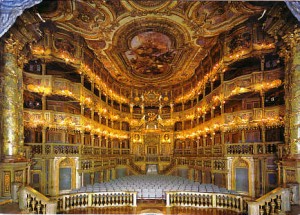 History tells us that the city authorities, moved by the interest the now famous Richard Wagner had in their little provincial town, offered the composer a piece of land to build on on 7 November, 1871. The occasion was too good for the composer to resist for one moment: it was impossible to miss such an opportunity to finally exist outside the respective holds of Ludwig II and Bismarck… without however giving up on the idea of asking them for the grants necessary for the construction of the building and the organization of the Festival! Indeed, the composer hoped that once tensions eased, given its privileged geographical location, the city of Bayreuth would attract, once the building had emerged, a first-class audience.
History tells us that the city authorities, moved by the interest the now famous Richard Wagner had in their little provincial town, offered the composer a piece of land to build on on 7 November, 1871. The occasion was too good for the composer to resist for one moment: it was impossible to miss such an opportunity to finally exist outside the respective holds of Ludwig II and Bismarck… without however giving up on the idea of asking them for the grants necessary for the construction of the building and the organization of the Festival! Indeed, the composer hoped that once tensions eased, given its privileged geographical location, the city of Bayreuth would attract, once the building had emerged, a first-class audience.
The project to create a Festival in Bayreuth and to erect a theatre naturally, very quickly, made its way into the mind of the Wagners. Especially since they were received very favorably by the city authorities (notably by the mayor Theodor Muncker), who actually made available for the composer a building site perched on a hill, the Bürgerreuth – which certainly was not the land that had been first proposed in November of the same year, but what does it matter! – for the sum of 14.000 guldens. The contract was signed on 15 December, 1871. All that remained was to build the Opera House of the Century.
2- Between the financing of the project and the artistic team to assemble:
preparations for the first Festival in Bayreuth
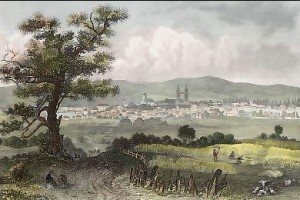 Henceforth, the issue of financing was crucial. Because, despite so many uncertainties and potential hazards, despite the doors (and purses) that refused to open, utopia prevailed; and this is what was at the same time profoundly brilliant or even totally crazy about the composer, launching a project of this magnitude without the funds for it!
Henceforth, the issue of financing was crucial. Because, despite so many uncertainties and potential hazards, despite the doors (and purses) that refused to open, utopia prevailed; and this is what was at the same time profoundly brilliant or even totally crazy about the composer, launching a project of this magnitude without the funds for it!
Admittedly, the municipality of Bayreuth had declared being ready to help Wagner build an entirely new theatre, by allocating to him, on the one hand, the concession of a land for the theatre, and, on the other hand, that of another land for his private house, Villa Wahnfried. The composer found among these honorable provincial notables warm supporters: the banker Friedrich Feustel and Theodor Muncker, the mayor of the city. Did they both hope to elevate their modest town to the rank of soon-to-be unmissable cultural spots by so many sovereigns and personalities of the intelligentsia? Despite these contributions, which were meager if we consider the immoderate scope of the project, Wagner and his supporters would still need a lot of energy to raise the necessary funds for the realisation of his dream.
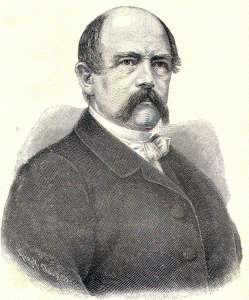 Then, Wagner even tried to strike higher. The first interview with Otto von Bismarck on 3 May, 1872 ended in failure: the Chancellery found the elegant pretext to refuse to put himself in an awkward situation with the King of Bavaria. Later, the Chancellor, undoubtedly amused by Wagner’s personality and ambition, would give him these words: “I have never seen such sharp self-awareness.”
Then, Wagner even tried to strike higher. The first interview with Otto von Bismarck on 3 May, 1872 ended in failure: the Chancellery found the elegant pretext to refuse to put himself in an awkward situation with the King of Bavaria. Later, the Chancellor, undoubtedly amused by Wagner’s personality and ambition, would give him these words: “I have never seen such sharp self-awareness.”
As for his historical patron, King Ludwig II of Bavaria, the fires of dissension had not yet gone out.
Faced with these doors that he did not hesitate to hit but that remained closed to him, Wagner realized very quickly that his project had to receive grants from private patrons: “the costs of my undertaking will have to be collected solely by private individuals” (letter from Richard Wagner to von Düfflip).
Fortunately, the enthusiasts were already there to support the Wagnerian undertaking, starting from the end of April 1871. The composer ensured this by setting up a first support committee in Berlin, in the form of a patronage: as soon as the visit to Bayreuth was finished, and the few august attempts aborted, the Wagners went to Berlin on 25 April, 1871 in order to settle things in full legal and financial compliance.
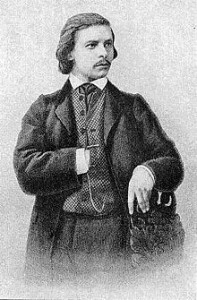 And there was the work of the loyal Karl Tausig, a close friend of the Master, a young twenty-nine year old Jewish pianist of Polish origin, a fervent Wagnerian, and who did not hesitate to multiply the public speeches in order to better make the Wagnerian work known through conferences, concerts, popular lectures. It was thanks to the dynamism of this early Wagnerian that the very first Patronatsverein was organized and saw the light of day. Thus was issued a public subscription of one thousand shares, worth three hundred thalers (the equivalent of 1.125 francs) each. The dividend of each share consisted only of the exclusive right to attend the performances of The Ring of the Nibelung in Bayreuth. The Board of Directors was composed of Messrs. Friedrich Feustel, Adolphe Gross, Theodor Muncker of Bayreuth, Emil Heckel of Mannheim, Friedrich Schoen of Worms.
And there was the work of the loyal Karl Tausig, a close friend of the Master, a young twenty-nine year old Jewish pianist of Polish origin, a fervent Wagnerian, and who did not hesitate to multiply the public speeches in order to better make the Wagnerian work known through conferences, concerts, popular lectures. It was thanks to the dynamism of this early Wagnerian that the very first Patronatsverein was organized and saw the light of day. Thus was issued a public subscription of one thousand shares, worth three hundred thalers (the equivalent of 1.125 francs) each. The dividend of each share consisted only of the exclusive right to attend the performances of The Ring of the Nibelung in Bayreuth. The Board of Directors was composed of Messrs. Friedrich Feustel, Adolphe Gross, Theodor Muncker of Bayreuth, Emil Heckel of Mannheim, Friedrich Schoen of Worms.
Outside of this official Berlin organization, Wagnerian societies were setting themselves up. All over Europe, the enthusiastic fans of the adventure as well as the “early Wagnerians” did not hesitate to pay to support the “adventure of Bayreuth” and with the secret hope of being able to attend what was already announced as an unprecedented artistic experience.
 Indeed, the very wise Emil Hecker did not hesitate to highlight the fact that a large number of music lovers (or curious people), unable to pay 1.125 francs, would nevertheless be willing to make a financial contribution within their means.
Indeed, the very wise Emil Hecker did not hesitate to highlight the fact that a large number of music lovers (or curious people), unable to pay 1.125 francs, would nevertheless be willing to make a financial contribution within their means.
Also, the board of directors, which became a committee of patronage, encouraged and even helped to create Wagnerian societies not only in Germany, but all over the world, in France, Russia, Netherlands, Belgium, Sweden, England, Italy, Egypt and the United States: their mission was to collect subscriptions, however modest they were, for the triple performance of The Ring of the Nibelung.
For this was the pursued goal, from the very first years when it was hoped Wagner’s colossal epic was to be performed on stage: to play three times the complete cycle of The Ring. Why three times? Firstly for reasons of obvious economic profitability, and also to satisfy the supposed crowd of spectators who would come in number to witness the realisation of the dream made reality.
The premature death of Karl Tausig, Wagner’s faithful right-hand man and foundation stone in the Bayreuth edifice, plunged the composer into deep sadness. On 17 July, 1871, deeply affected by the loss of his “comrade in arms”, Wagner dedicated to him a particularly moving epitaph.
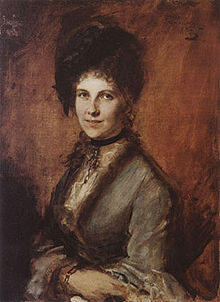 The committee was then placed under the direction of Maria von Schleinitz, the wife of Prussian Minister Alexander von Schleinitz. The birth of the Festival was still considered with optimism for the summer of 1873. Passing through Leipzig, during a first press conference, Richard Wagner solemnly announced on 12 May, 1872 that the first edition of the festival would take place in 1873. At that time, he deliberately planned the bare minimum – especially with regard to the aesthetic of the building and the comfort of the guests!
The committee was then placed under the direction of Maria von Schleinitz, the wife of Prussian Minister Alexander von Schleinitz. The birth of the Festival was still considered with optimism for the summer of 1873. Passing through Leipzig, during a first press conference, Richard Wagner solemnly announced on 12 May, 1872 that the first edition of the festival would take place in 1873. At that time, he deliberately planned the bare minimum – especially with regard to the aesthetic of the building and the comfort of the guests!
But the subscription was not entirely covered and money was lacking. To raise funds, Wagner decided once more to make a concert tour. And on the road that took him to Tribschen, the composer multiplied meetings, readings, conferences, receptions, in Leipzig, Frankfurt, Darmstadt or Heidelberg. With one goal: to convince.
On 22 May, 1872, the anniversary day of the Master’s birth, the first stone of the new Theatre was laid. “Be blessed, my stone, stand long and hold on tight,” it said. In the evening, Richard Wagner led a private concert for his patrons and conducted himself Beethoven’s Ninth Symphony at the Margravial Opera House.
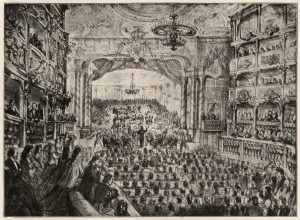
But despite all the efforts made by the Master, Cosima and their devoted friends, the money did not come in, at least not enough. 1873 did not see the first festival. Wagner attempted a new approach towards the emperor, that was unsuccessful again. A new money hunt arose: for a total amount of 5.000 dollars, the composer was offered to write a Solemn March to be performed on the occasion of the centennial of the Independence of the United States; furthermore, he agreed to compose another Festive March for the opening of the Universal Exhibition of Philadelphia, which would take place in 1876, and which paid him 25.000 francs. Even the banker Feustel called him again for a series of concerts.
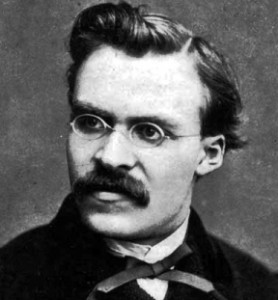 But despite the goodwill of all, it was still not enough! In the spring of 1873, only three hundred and forty subscriptions were bought: 130.000 thalers all in all, and 400.000 were still lacking. Nietzsche, although already ill, but for the time being still won over to Wagner’s cause, wrote a “Call to the Germans” in favour of Bayreuth. On 30 August, 1873, through a Communication to MM. the bosses of the Scenic Festivals in Bayreuth, Richard Wagner confirmed the rumors that “the projected performances will not take place before the summer of 1875“. The composer invoked to explain this delay the lack of liquidity. And indeed, the workers threatened to stop the construction.
But despite the goodwill of all, it was still not enough! In the spring of 1873, only three hundred and forty subscriptions were bought: 130.000 thalers all in all, and 400.000 were still lacking. Nietzsche, although already ill, but for the time being still won over to Wagner’s cause, wrote a “Call to the Germans” in favour of Bayreuth. On 30 August, 1873, through a Communication to MM. the bosses of the Scenic Festivals in Bayreuth, Richard Wagner confirmed the rumors that “the projected performances will not take place before the summer of 1875“. The composer invoked to explain this delay the lack of liquidity. And indeed, the workers threatened to stop the construction.
Then, a dramatic turn of events: King Ludwig II of Bavaria, on 25 January 1874, and despite their past quarrel, advanced 100.000 thalers to Wagner with these words, that became famous: “No! No and no again! That is not how it should end; the aid must come!“
In a letter to King Ludwig II of Bavaria, Richard Wagner replied on 3 February, 1874 and hid neither his emotion nor his thanks: “O my King full of grace! You only need to have a look at all the German princes to recognize that it is only You whom the German spirit still looks at with hope. “
There were certainly some events around this loan but the fact remained and on 20 February, 1874 an agreement was reached between the Board of Directors of the Bayreuth Festival and the Secretariat of the Court of Bavaria. It was about the 100.000 thalers promised and it was stipulated that it was to be repaid little by little by Richard Wagner and his heirs with the receipts of the Festival.
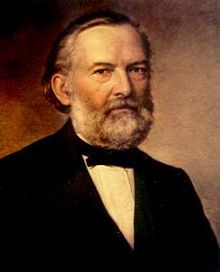 On 7 May, 1874, finally, Wagner announced to Muncker and Feustel the beginning of the festival for the summer of 1876. And on 21 November, 1874, in his Wahnfried refuge, Wagner wrote down the very last note on the third act of the Twilight of the Gods score. On the last handwritten page, he annotated “Finished at Wahnfried. I do not add any comments.”
On 7 May, 1874, finally, Wagner announced to Muncker and Feustel the beginning of the festival for the summer of 1876. And on 21 November, 1874, in his Wahnfried refuge, Wagner wrote down the very last note on the third act of the Twilight of the Gods score. On the last handwritten page, he annotated “Finished at Wahnfried. I do not add any comments.”
Indeed, what could one add? An (ambitious) score now finished on one of the most complete librettos in the history of music, a theatre ready to see the light of day…
And the performance? Because Wagner was just as attentive to the scenography of his work as to the construction of his titanic musical epic.
And among the primordial subjects, where should one find singers fitting the requirements wanted by the composer? From the time Wagner created his first works and the advent of Bayreuth, decades had passed… Tichatschek was 69 years old, Ludwig Schnorr von Carolsfeld passed away shortly after creating the role of Tristan… Where were the singers as valiant as flexible and especially credible scenically to satisfy Wagner’s requirements?
Then accompanied by his wife Cosima – who, one must recognize (thanks to a musical heredity from her father perhaps?) possessed a critical sense and certain discernment regarding the appreciation of the quality of the singers, he resumed his inspection tour of German theatres in order to find here and there the future holders of the roles for The Ring.
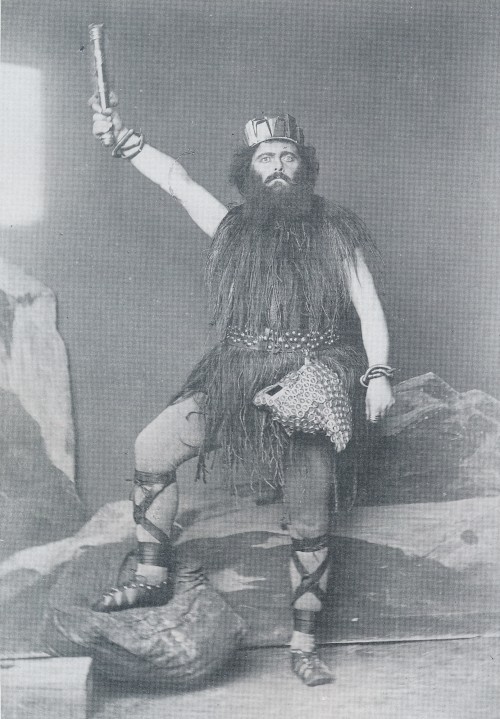 Since 1872 when the couple undertook their first trip to recruit soloists, which took them to Würzburg, then Frankfurt am Main, Mannheim, Darmstadt, Karlsruhe, Mainz as well as Magdeburg, Dessau and Leipzig, and with the notable exception of Franz Diener, a young singer who impressed him in Cologne in a performance of Mozart’s The Magic Flute, Wagner searched and got discouraged.
Since 1872 when the couple undertook their first trip to recruit soloists, which took them to Würzburg, then Frankfurt am Main, Mannheim, Darmstadt, Karlsruhe, Mainz as well as Magdeburg, Dessau and Leipzig, and with the notable exception of Franz Diener, a young singer who impressed him in Cologne in a performance of Mozart’s The Magic Flute, Wagner searched and got discouraged.
After more than a month of touring, he drew disillusioned conclusions in an essay A Glance at the German Operatic Stage of To-day. Nothing found favour with the composer, not any more on the subject of the conductors on whom he noted “the same incompetence spreading in all dramatic music genres to be found, in the execution, the exact style, whether it is Mozart or Meyerbeer” than among the singers, unfit, according to him, to take on the scores of The Ring.
Even so, a few names stood out from the crowd during these years of “Quest for the Grail”: Karl Hill, the future creator of Alberich, Franz Betz (Wotan), Franz von Reichenberg (Fafner), Lili Lehmann (Woglinde and the Forest Bird), Therese Vogl (Sieglinde), Amalie Materna (Brunnhilde) and Emil Scaria (Hunding). The only – and yet essential – role that still eluded the choice of the composer was Siegfried’s, which ultimately went to Georg Unger, who revealed himself during rehearsals and then performances quite below the composer’s expectations; a bad choice which, during the performances of 1876, did not escape the acerbic musical criticism of the time.
 On 15 January, 1875, Wagner signed the circular inviting artists to go to the Festspielhaus the following summer for the first rehearsals. They were only to receive as their wage the compensation of the expenses from their stay, the funding of the Patronatsverein and the Wagner Societies throughout Europe being insufficient – a tradition that lasted until very recently, the singers not performing in Bayreuth for financial gain, but for the “prestige” of having be invited.
On 15 January, 1875, Wagner signed the circular inviting artists to go to the Festspielhaus the following summer for the first rehearsals. They were only to receive as their wage the compensation of the expenses from their stay, the funding of the Patronatsverein and the Wagner Societies throughout Europe being insufficient – a tradition that lasted until very recently, the singers not performing in Bayreuth for financial gain, but for the “prestige” of having be invited.
As for the orchestra, it brought together one hundred and eight musicians from various ensembles from Germany, Austria and the Netherlands. Again, the expected salaries were very meagre. The conductor chosen for The Ring was invited (NB: a tradition that remained for a long time on the Green Hill).
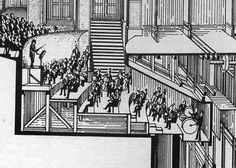 Sunday 1 August, 1875, was a moment of extreme tension: for the first time, the completion of the conception of “Nibelheim” could be heard – “the mystical abyss” – the covered pit in which the orchestra would perform. And the magic of acoustics operated. Wagner supposedly said, according to the notes taken by Karl Heckel: “That’s what I wanted. Now the brasses sound less blunt. “
Sunday 1 August, 1875, was a moment of extreme tension: for the first time, the completion of the conception of “Nibelheim” could be heard – “the mystical abyss” – the covered pit in which the orchestra would perform. And the magic of acoustics operated. Wagner supposedly said, according to the notes taken by Karl Heckel: “That’s what I wanted. Now the brasses sound less blunt. “
On 2 August, 1875, the orchestra rehearsals began: the three daughters of the Rhine made their singing heard on a still bare stage as Joseph Hoffmann’s sets did not arrive until the next year. Wagner pursued his ideal of realism on stage and initiated the singers to stage acting, miming and singing by turns each of the roles : it had become an obsession for the composer. Realism first and foremost…
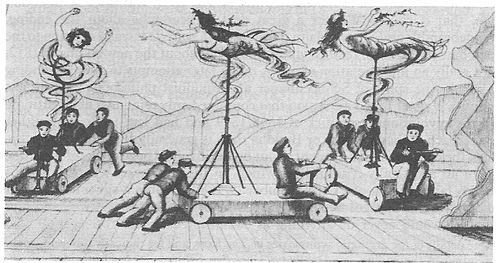
However, financial woes kept catching up with the composer: a year before the first edition of the Festival, the deficit was already enormous. And as always, Wagner pulled out all the stops. On the one hand, Wagner the composer multiplied the concerts in Germany and abroad to raise funds for the Festival, on the other hand Wagner the company director did not skimp on anything regarding the expenses incurred for his “public relations”: receptions at Wahnfried, suppers-feasts to which the artists in particular were invited (on whom Cosima expressed for the first time her disagreements: by the way, an incident broke out with the tenor Albert Niemann – future Siegmund – during a garden party on 13 August, 1875)… The expenses were considerable and disproportionate compared to the revenues emanating from the Patronatsverein and the Wagner Societies.
In October 1875, Wagner sent a request to the Emperor asking for a loan of 30,000 thalers for the first edition of the Festival. The latter, with the agreement of Bismarck, finally accepted the request for grant as long as it was the subject of a proposal to the Reichstag. When he heard the news, Wagner, whose desire for independence at all costs caught up with him, withdrew his request. Despite these financial “peccadilloes” (could they ever curb Wagner’s enthusiasm and determination?), the Festpielhaus sprung up, the artists gathered, and the Festival, scheduled for the summer of 1876, was ready to reveal itself in the eyes of a public… stunned by such an adventure!
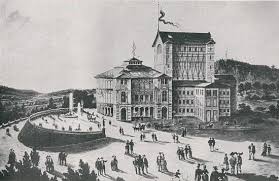
The rehearsals, which started the previous summer, resumed from 3 June to 6 July: the dress rehearsal took place on 6, 7, 8, and 9 August; and, before an audience that included many crowned heads and renowned artists, finally began on 13 August the performances of The Ring. William I, Emperor of Germany, simply said to him: “I did not think you would manage to do it.”
NC/SB
List of reference materials consulted for the realization of Section IV : BAYREUTH
![]()
If you wish to share further information about this article, please feel free to contact us !